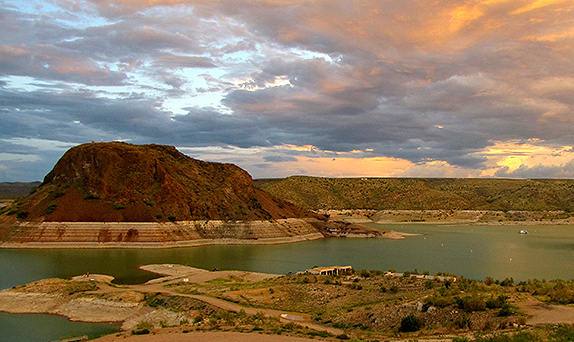
Travelers headed south of Elephant Butte Reservoir in New Mexico might have noticed a full, flowing Rio Grande in recent days. The coveted water was on its way to Mexico where, under a binational 1906 treaty, the U.S. is annually obligated to deliver 74 million cubic meters of the liquid. Once past the border, the water is used for irrigating farmland in the Juarez Valley of Chihuahua state, which encompasses the municipalities of Praxedis C. Guerrero, Guadalupe Distrito Bravos and Juarez.
Long known for its fertile farmland as well as contraband corridors, the Juarez Valley was one of the hardest hit areas in the so-called Narco-War, especially between 2008 and 2010 when thousands of residents fled their homes and abandoned farm land. Many sought refuge in Hudspeth County, Texas, just across the Rio Grande.
Now, some people are returning and seeking to revive the agricultural economy in a still-challenging environment.
Francisco Esquivel, member of the Ejido Juarez y Reforma, told El Diario newspaper that he and six other ejido members returned this year to try their hand at reviving the land. Four years ago, conditions were virtually impossible for farming-and living-in the Juarez Valley, according to Esquivel.
“You couldn’t do anything during those years,” the farmer said. “They burned crops and trucks, and left bodies abandoned on the side roads…” Esquivel said security considerations have improved but not completely. A long absence from the land has also made financing issues a challenge, he added.
Separately, Manuel Guizar Fuentes, assistant director of the regional office of the federal Secretariat of Agriculture, Livestock and Rural Development, said the major portion of the farm land in the Juarez Valley has been planted in crops this year. Guizar was optimistic that agricultural production in 2014 will surpass the levels attained in the previous three years, especially in the region’s emblematic cotton crop.
Water, of course, remains of primary concern to the Juarez Valley’s growers. Because of ongoing drought, this year’s Rio Grande delivery is expected to come out to only 19 million cubic meters of the 74 million cubic meters allocated every year to Mexico under the provisions of the 1906 convention.
U.S. water deliveries were also sharply down in 2011, 2012 and 2013. While not as dramatically reduced as the last three years, Rio Grande water deliveries likewise fell well below the 74 million cubic meter mark in 2008, 2009 and 2010.
Jesus Luevano Grano, secretary of the Mexican section of the International Boundary and Water Commission, the binational organization that oversees Rio Grande water issues, warned that not enough river water will be available for the Juarez Valley’s farmers, as is the case on the U.S. side of the border.
“The remainder of the water necessities, here and there, is being met with well water, with extractions from below the ground.”
If abundant rains return this year, the Juarez Valley could get additional Rio Grande water for irrigation purposes. In the event that the current climatic pattern continues, the Mexican farmers will be forced to do as their U.S. counterparts in neighboring El Paso County, Texas, and the Mesilla and Hatch valleys of southern New Mexico: pump more and more water from below the ground.
Sources: El Diario de El Paso/Juarez June 9 and 10, 2014. Articles by Antonio Rebolledo and editorial staff.
(Photo by Rohit Chhiber)



Responses to “Juarez Valley Strives for Recovery”